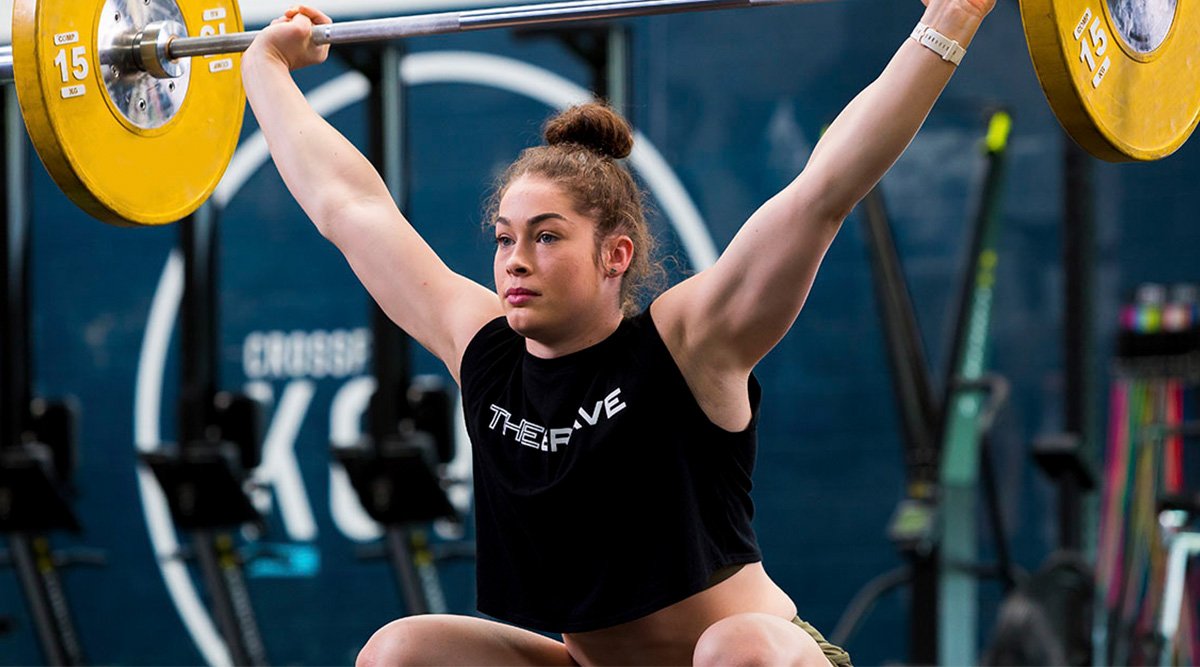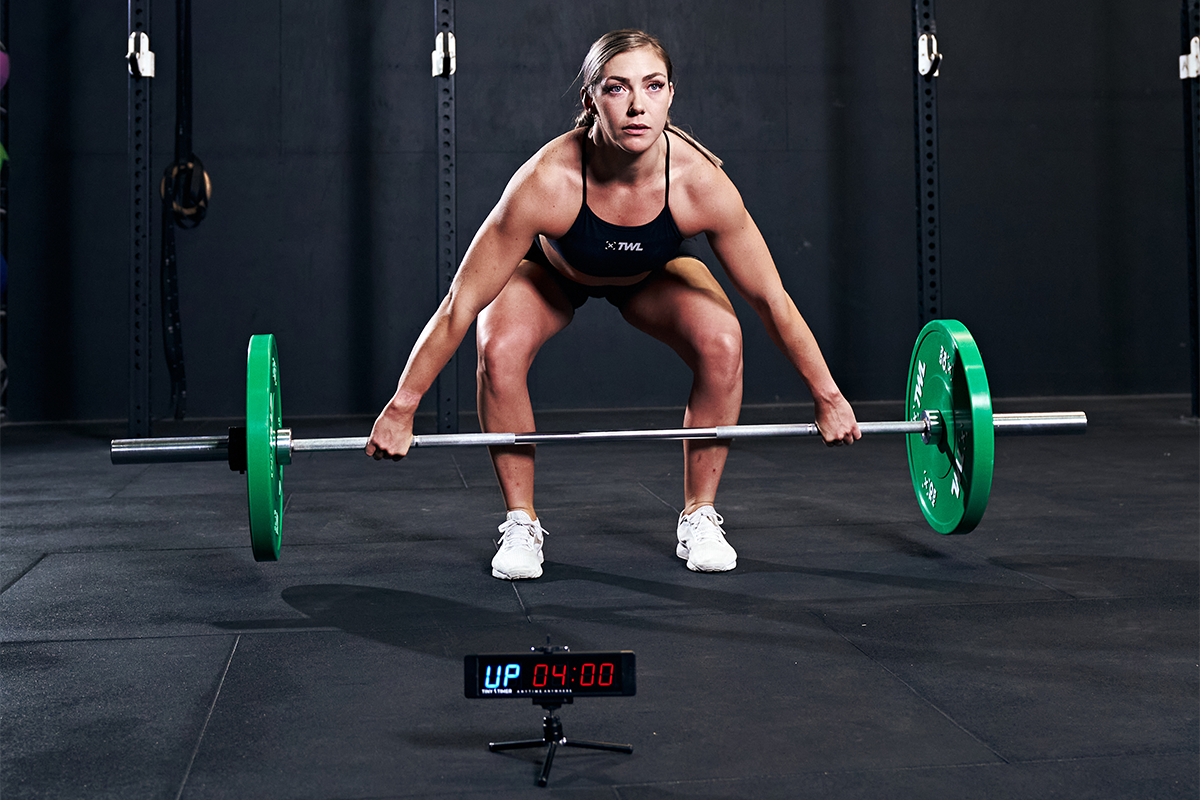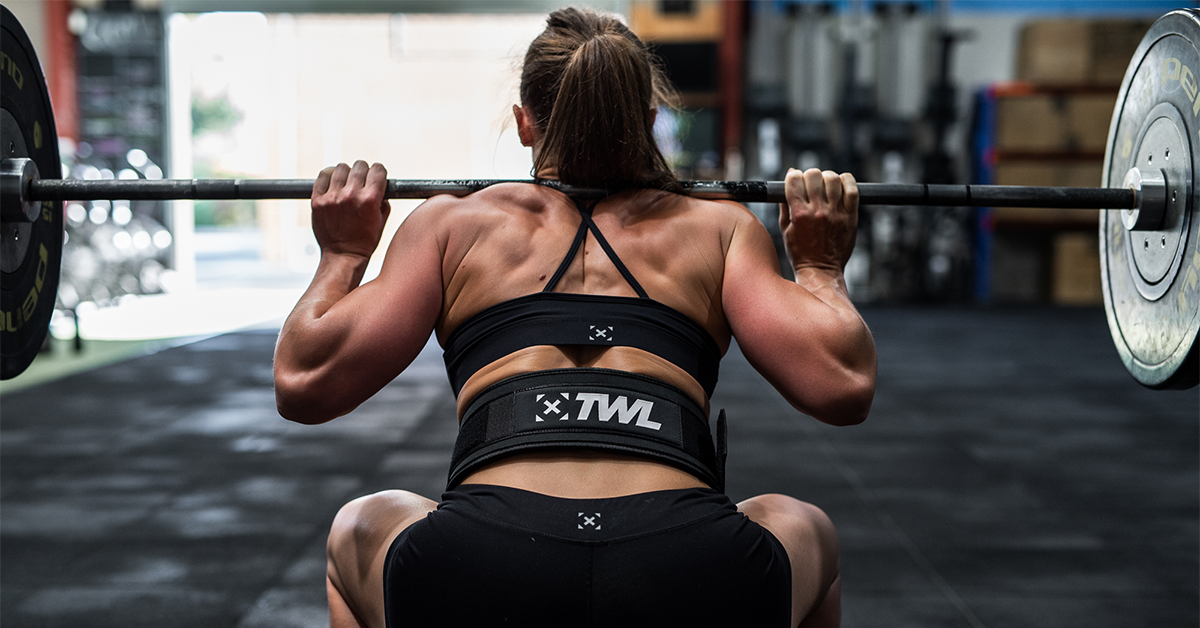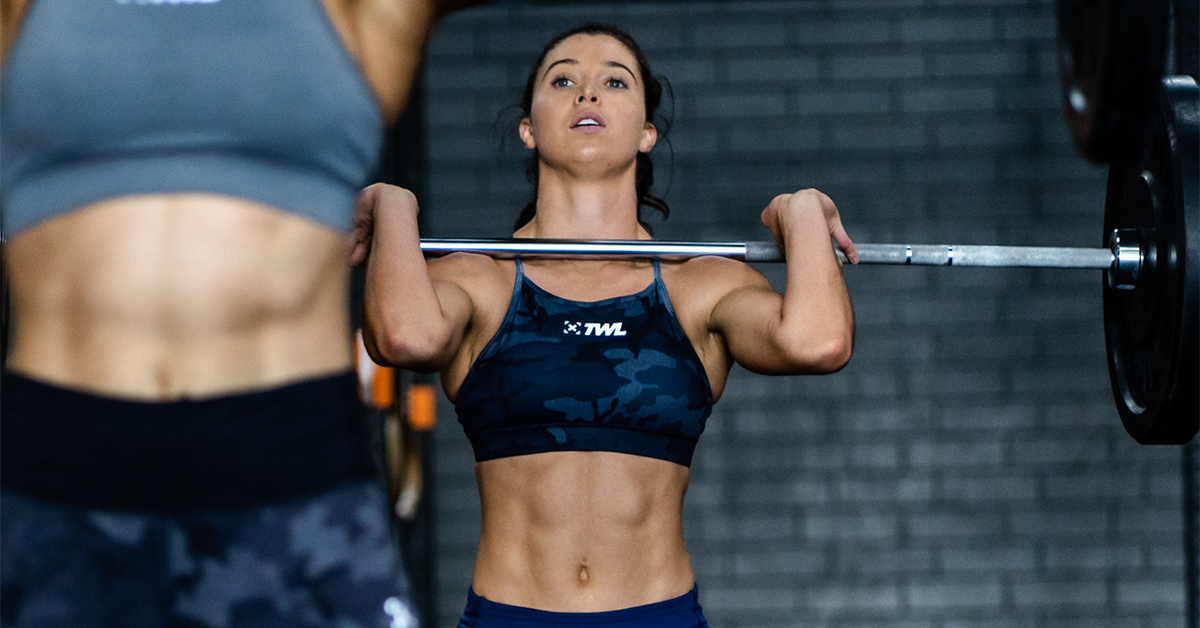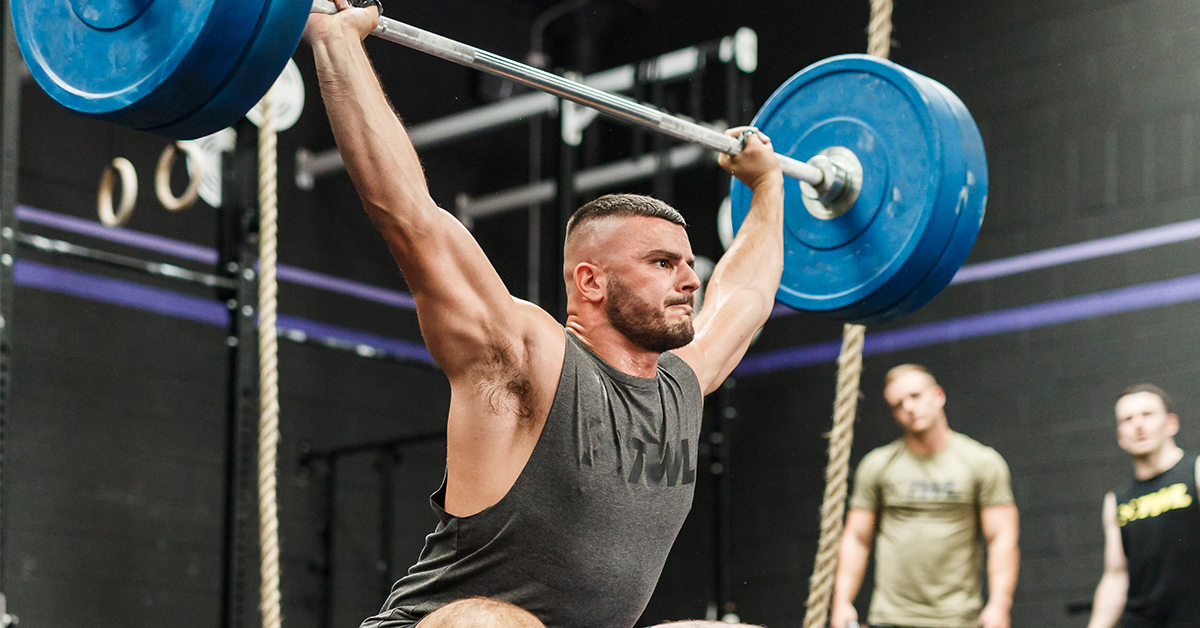The overhead squat is one of the most difficult movements — not because of how it challenges strength, but because of the mobility and coordination required to perform it properly. A mobility restriction anywhere — in your ankles, hips, thoracic spine, shoulders — will not only prevent proper movement through the overhead squat but can also lead to injury due to the compensations (i.e., mistakes) your body makes while trying to complete the movement.
Here are some of the most common mistakes people make in the overhead squat, as well as corrections and mobility drills to prevent or correct them.
https://www.instagram.com/p/CAe8Xi0Djdp/
4 Common Mistakes in the Overhead Squat
1. Leaning Too Far Forward
Throughout the overhead squat, the bar should be stacked in line with your shoulders and midfoot and your elbows should be locked out, armpits facing slightly out. Sometimes, when an athlete lacks ankle mobility, they end up leaning their torso too far forward in order to achieve squat depth under the bar.
If this is you: Take some time to roll out and massage your calves, your feet, and your ankles. Focus on increasing your dorsiflexion. Then, with a PVC pipe, practice the overhead squat and try to keep your chest as upright as possible.
2. Holding the Bar Too Far Behind the Head
This mistake is often made in combination with the previous one. As you lower yourself into the squat, the bar should travel in a straight line up and down. However, if your torso is hinging too much, your arms will press the bar further behind your head in order to keep a straight bar path and maintain balance. At the bottom of the squat, your arms will be stretched behind you like wings, and if you have to bail out of the lift, you’ll have a hard time getting out of the bar’s way.
If this is you: As with the previous mistake, work on your ankle mobility and keeping an upright chest throughout the overhead squat. You may also want to roll out your hamstrings.
3. Arching Your Back/Sticking Your Butt Out
Your spine should remain neutral throughout the overhead squat, but if you have restrictions in your shoulders or thoracic spine, you may find yourself arching your back and sticking your butt out as you lower yourself into the bottom of the squat.
If this is you: Before performing any more reps, tackle your shoulders with a lacrosse ball and your thoracic spine with a foam roller.
- On your shoulders, locate tight or sore areas, apply pressure, and roll out.
- For your thoracic spine, fold your arms across your chest and roll up and down on the foam roller. Be sure not to roll out your lower back, just your mid and upper back. Then, with the middle of your back on the roller, extend your thoracic spine backward, bringing your shoulders toward the floor and keeping your lower back neutral. Perform several reps.
Once you’ve mobilized, practice the overhead squat with a PVC, focusing on an upright torso and dropping your butt straight down.
View this post on Instagram
4. Rounding Your Lower Back at the Bottom of the Squat
Also known as the “butt wink,” the excessive rounding of your lower back at the bottom of a squat (any squat, not just the overhead squat) destabilizes your pelvis and puts your spine in an unsafe position for moving a load.
To be clear, a minor butt wink typically isn’t anything to worry about. If it restricts your movement or causes pain, however, this is something that needs to be addressed.
If this is you: The butt wink is generally caused by mobility restrictions in the hips, hamstrings, or ankles, so take a break from squatting and focus on mobilizing those areas. Then, practice the overhead squat with a PVC and focus on maintaining a neutral spine throughout the movement. Have a coach or workout buddy double-check your form (keeping in mind that neutral is a range).
The overhead squat is a challenging movement, and mobility limitations are the primary cause of these common mistakes. But if you want a strong snatch and if you want to correct movement problems in your front or back squat, the overhead squat is one of the best drills to add to your training regimen.
Finding the right programming isn’t easy. We can help! Check out our squat program — gains are around the corner.

